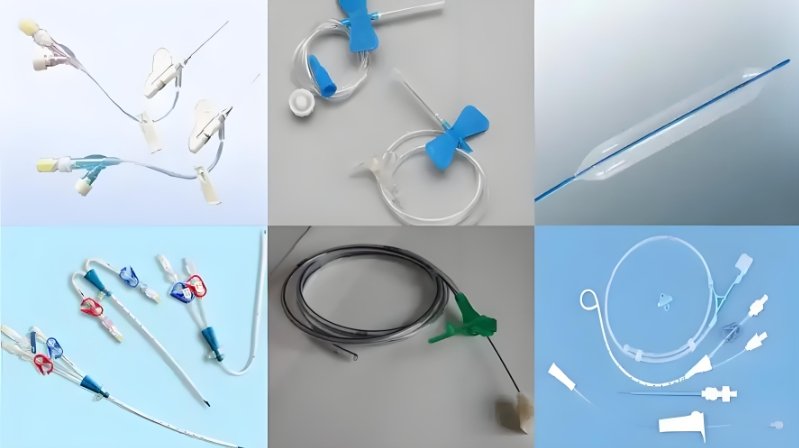
AI and automation are changing manufacturing. Medical injection molding is no exception. These technologies improve efficiency, accuracy, and production speed. Mold makers use AI and automation to produce high-quality medical parts. This article explores how AI and automation impact medical injection molding.
1. The Role of AI in Medical Injection Molding
1.1 What is AI in Manufacturing?
AI, or artificial intelligence, refers to computer systems that mimic human decision-making. In medical injection molding, AI helps optimize processes, reduce waste, and improve precision. AI-powered systems analyze data to make real-time adjustments.
1.2 AI in Quality Control
AI detects defects faster than human inspectors. Cameras and sensors scan molded parts in real time. AI software identifies errors and prevents faulty parts from reaching customers. This improves quality and reduces waste.
1.3 AI in Predictive Maintenance
Machine failures cause delays and increase costs. AI predicts when a machine needs maintenance. This prevents breakdowns and reduces downtime. Mold makers use predictive maintenance to keep production running smoothly.
1.4 AI for Process Optimization
AI analyzes molding conditions like temperature and pressure. It adjusts settings to ensure the best results. This reduces defects and improves consistency in medical injection molding.
2. The Role of Automation in Medical Injection Molding
2.1 What is Automation?
Automation uses machines and robots to perform tasks without human intervention. In medical injection molding, automation improves efficiency and precision.
2.2 Robotic Arms in Molding
Robotic arms handle molded parts with precision. They remove parts from the mold, inspect them, and place them on conveyors. This reduces human error and speeds up production.
2.3 Automated Material Handling
Automation ensures precise material dosing. This prevents material waste and ensures consistency. Automated systems measure and mix raw materials with high accuracy.
2.4 Automated Packaging
Automated systems package medical parts immediately after molding. This reduces contamination risks and ensures compliance with industry standards.
3. How AI and Automation Improve Efficiency
3.1 Faster Production Cycles
AI and automation speed up production. Machines operate continuously without breaks. This leads to higher output and faster delivery times.
3.2 Reduced Labor Costs
Automation reduces the need for manual labor. Companies save money on wages and training. Workers can focus on tasks that require human expertise.
3.3 Lower Waste Levels
AI optimizes material use. It detects defects early, preventing wasted resources. Mold makers benefit from lower material costs.
3.4 Consistency in Production
AI and automation ensure uniform quality. Every molded part meets exact specifications. This is critical for medical injection molding, where precision matters.
4. Challenges of AI and Automation in Medical Injection Molding
4.1 High Initial Investment
AI and automation require expensive equipment. Companies must invest in smart machines, software, and training.
4.2 Integration Complexity
Existing production systems may not be compatible with AI and automation. Upgrades and custom solutions may be necessary.
4.3 Cybersecurity Risks
Automated systems rely on data networks. Cyberattacks can disrupt production. Companies must implement strong security measures.
4.4 Workforce Adaptation
Automation reduces the need for some jobs. Workers must adapt by learning new skills. Companies should provide training to keep employees valuable.
5. AI-Driven Innovations in Medical Injection Molding
5.1 AI in Mold Design
AI helps design complex molds. It simulates how materials will flow, reducing design errors. Mold makers create better molds in less time.
5.2 AI-Powered Supply Chain Management
AI predicts material shortages and optimizes inventory. This prevents production delays and reduces storage costs.
5.3 Smart Sensors for Real-Time Monitoring
Smart sensors track machine performance. AI analyzes data and adjusts settings for better efficiency.
6. Future Trends in AI and Automation for Medical Injection Molding
6.1 Increased Use of Machine Learning
Machine learning helps AI improve over time. AI will become more accurate in predicting machine failures and optimizing production.
6.2 Fully Automated Factories
Future factories may be fully automated. Human intervention will be minimal, improving speed and efficiency.
6.3 Integration with the Internet of Things (IoT)
IoT connects machines and systems. This enables remote monitoring and predictive analytics. Mold makers will manage production from anywhere.
6.4 Sustainable AI Solutions
AI will help manufacturers use eco-friendly materials and reduce energy consumption. This will make medical injection molding more sustainable.
AI and automation are transforming medical injection molding. They improve efficiency, reduce costs, and ensure precision. Mold makers benefit from smarter production systems and higher-quality molds. While challenges exist, the future of medical injection molding will rely heavily on AI and automation. Companies that invest in these technologies will stay ahead in the industry.
